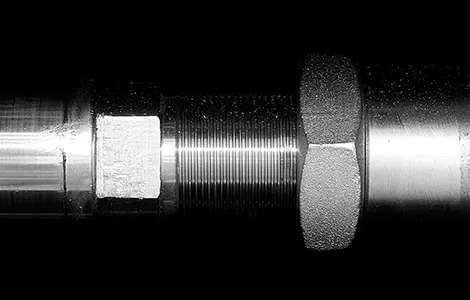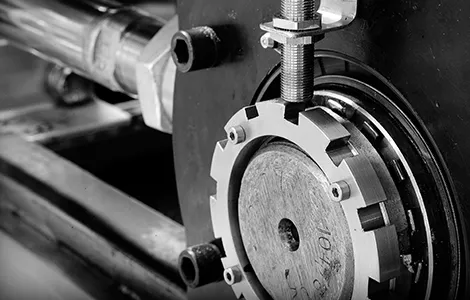Double Belt Press Machines: How They Improve Lamination Quality
October 13, 2025
In modern manufacturing, where precision and consistency define competitiveness, the double belt press machine has become a vital piece of equipment. Lamination is not simply about bonding layers together, it’s about achieving uniform quality, structural integrity, and reliable performance at scale. Whether in the production of composites, laminates, or flooring, a double belt press ensures that every square metre of material meets demanding industrial standards.
This article explores how these systems work, the industries that benefit from them, and why the move from single-belt to double belt press lamination delivers clear advantages.
The Principle Behind Double Belt Press Machines
At the core of a double belt press is a simple, yet powerful concept: two parallel belts working in unison to apply even heat and pressure across a moving material. By maintaining consistent force on both sides, the process ensures that the entire surface experiences identical conditions during lamination.
In contrast, single-belt systems often rely on pressure applied from one side only, which can create uneven bonding or surface variations. For manufacturers where appearance and performance are equally important, these imperfections can result in costly waste or rejected batches.
The double belt laminator resolves this issue by creating a continuous and uniform pressing environment. This is especially important when working with large-format products or materials that require tight tolerances.
Uniform Pressure and Temperature: Eliminating Inconsistencies
One of the defining strengths of a double belt press machine is its ability to maintain uniform pressure and temperature across the full surface of the material being processed.
- Pressure consistency: Both belts apply force evenly, avoiding weak points or under-pressed areas that might cause delamination or structural defects.
- Temperature control: Integrated heating systems ensure the material reaches and maintains optimal bonding temperatures, improving adhesion and reducing the risk of uneven curing.
- Continuous production: Because the material moves steadily through the press, there are no sudden changes in pressure or heat, resulting in predictable and repeatable outcomes.
These qualities are critical in industries where even minor flaws can compromise the performance or durability of the finished product.
Advantages Across Key Industries
The applications of double belt press lamination span multiple sectors, each benefiting from the technology in unique ways.
Composites Manufacturing
Composite panels, whether for automotive, aerospace, or construction, demand structural strength without excess weight. Double belt presses create smooth, uniform laminations that contribute to both mechanical integrity and a high-quality finish. In industries where safety and reliability are non-negotiable, consistency is paramount.
Laminates and Flooring
Decorative laminates and flooring materials rely on perfect surface finishes. With a double belt press, top layers bond seamlessly to core substrates, ensuring durability and a flawless appearance. The ability to handle continuous runs also supports large-scale flooring production where output speed is as important as quality.
Electronics and Insulation
For electrical insulation materials or sensitive electronic components, precise lamination prevents failures in the field. Double belt press machines reduce the risk of uneven bonding, protecting both performance and longevity. Uniform heat distribution also ensures delicate materials are not overheated or damaged during processing.
Packaging and Specialty Applications
From food packaging to specialist films, the ability to laminate thin, flexible materials under tightly controlled conditions makes the double belt laminator a versatile solution; the precision it provides helps manufacturers meet strict regulatory and quality standards.
Comparing Double Belt Presses with Single-Belt Systems
While single-belt systems still play a role in certain production environments, the differences between the two technologies highlight why many manufacturers are shifting to double belt presses:
- Even Distribution: Pressure and heat are applied across the full surface in double systems, whereas single belts can create uneven zones.
- Reduced Defects: More consistent lamination means fewer rejects, less rework, and lower material waste.
- Scalability: Double belt press machines are well-suited for both small-batch specialty production and high-volume industrial output.
- Product Quality: The final material often has a smoother surface, stronger adhesion, and greater durability when processed under a double belt system.
These advantages often outweigh the initial investment, particularly for companies seeking long-term efficiency and reliability.
Double Belt Press Lamination: Efficiency and Sustainability
Beyond quality improvements, double belt press lamination also supports greater efficiency and sustainability in production. The uniform heat transfer reduces the amount of energy wasted, while fewer defective products mean less raw material is discarded.
For manufacturers seeking to balance output with environmental responsibility, this dual benefit makes double belt press systems an attractive choice. Continuous operation also means higher throughput without sacrificing consistency, an essential factor in competitive global markets.
The Future of Double Belt Press Machines
As industries adopt smarter, more automated production systems, double belt presses are evolving too. Integration with digital monitoring tools allows manufacturers to track belt performance, pressure, and heat in real time, ensuring optimal conditions are maintained throughout every run.
Looking ahead, the combination of automation, energy efficiency, and precision engineering will make the double belt press machine an even more valuable asset across multiple industries.
Conclusion
Consistency and precision are the hallmarks of effective lamination, and the double belt press delivers on both. By applying uniform pressure and temperature, reducing defects, and enabling scalable production, these machines represent a major advancement over single-belt systems.
From composites and laminates to flooring and specialty materials, the double belt laminator ensures that every product meets the highest quality standards. For manufacturers seeking a competitive edge, double belt press lamination offers not just improved performance, but long-term reliability and efficiency.

